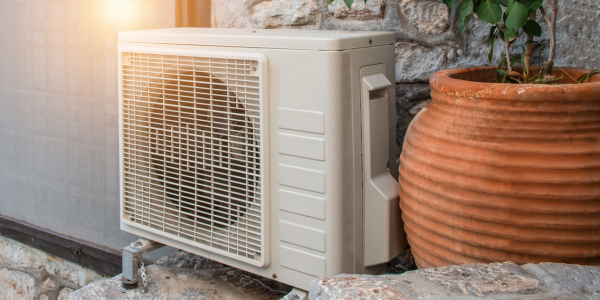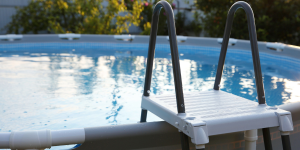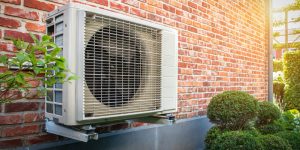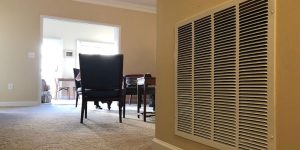Choosing a new HVAC system isn’t just about replacing old equipment—it’s about investing in the right level of comfort, energy efficiency, and long-term performance for your home. In Ottawa, where winter lows hit -30°C and summer highs push +30°C, your heating and cooling system needs to work hard year-round.
In this post, I’ll walk through the most common HVAC system types available today, including:
- High-efficiency furnaces
- Central air conditioners
- Heat pumps
- Hybrid systems (furnace + heat pump)
- Full electric systems
You’ll learn how each system performs, what it costs to run, and how to choose the best option for your home and lifestyle.
Prefer to watch instead? Check out my full video below:
Understanding Your HVAC Options
Before diving into comparisons, here’s a quick breakdown of the five most common HVAC configurations:
- Furnace + Air Conditioner: A traditional setup, pairing a gas furnace for heating and a standard AC for summer cooling.
- Heat Pump Only: One system that can heat and cool. Best for moderate climates or well-insulated homes.
- Hybrid System: Combines a furnace with a heat pump. The heat pump does most of the work; the furnace kicks in during extreme cold.
- Full Electric System: No gas at all—uses electric heating and cooling year-round. Best suited for homes with high energy efficiency and upgraded panels.
- High SEER Air Conditioners: Efficient cooling options that work with either gas furnaces or electric systems.
Comparing Furnace Efficiency Levels
When it comes to furnaces, efficiency ratings make a big difference in both comfort and operating costs. Below is a comparison of common furnace types, their energy usage, and what you can expect in terms of performance and pricing.
| Furnace Efficiency | Motor Type | Operation Cost (Est.) | Pros | Cons | Installed Cost (Est.) |
|---|---|---|---|---|---|
| 95% | Single-stage | ~$18/month | Lower upfront cost, simple | Higher energy use, less comfort | $4,000–$4,800 + HST |
| 96% | Two-stage | ~$16.20/month | Improved comfort, better efficiency | Slightly higher cost | $5,200–$5,800 + HST |
| 98% | Modulating | ~$15.30/month | Maximum comfort, most efficient | Higher install cost, more complex | $7,200–$7,800 + HST |
Heat Pump vs Air Conditioner: What You Should Know
When it comes to cooling your home during hot summers, both heat pumps and air conditioners are up for the job. But if you’re looking for an energy-efficient, all-in-one system that can both heat and cool your home, a heat pump could be worth the upgrade.
So when comparing a heat pump vs an air conditioner, what’s the difference between the two, and which one makes more sense for your home and budget? Let’s break it down.
What They Do
- Air Conditioner: Cools your home in the summer. Requires a separate heating system (like a furnace).
- Heat Pump: Can heat and cool. Acts as an air conditioner in summer and a heater in spring/fall (and even in mild winter conditions).
When to Choose a Heat Pump
- You want a dual-purpose system (heating + cooling)
- You have a hybrid setup or plan to install one
- You’re looking to reduce your reliance on natural gas
- You’re eligible for rebates or energy efficiency incentives
When to Stick with an Air Conditioner
- You already have a high-efficiency furnace and just need cooling
- You want to avoid a panel upgrade or electrical work
- Your main goal is lower upfront cost
Air Conditioner vs Heat Pump SEER Ratings
When comparing air conditioners vs heat pumps, SEER ratings (Seasonal Energy Efficiency Ratio) are key. Higher SEER ratings mean more efficiency and lower energy bills. Here’s how different options stack up:
| SEER Rating | Monthly Cost Estimate | Key Features | Estimated Installed Cost |
|---|---|---|---|
| 14 SEER | ~$100 | Basic, single-stage cooling | $3,800–$4,600 + HST |
| 18 SEER | ~$78 | Two-stage or modulating, quieter operation | $5,800–$9,000 |
| 22 SEER | ~$64 | Maximum efficiency and noise reduction | $8,000–$14,000 |
SEER stands for Seasonal Energy Efficiency Ratio. Higher SEER = lower energy use. Learn more from Natural Resources Canada.
Furnace, Hybrid, or Full Electric?
Deciding between a traditional furnace, a hybrid system, or a fully electric HVAC setup depends on your comfort preferences, energy goals, and home’s electrical capacity. The table below outlines the benefits, drawbacks, and cost ranges for each option.
| System Type | Best For | Pros | Cons | Estimated Cost (HVAC Only) |
|---|---|---|---|---|
| Furnace + AC | Simplicity, budget installs | Simple, reliable, low upfront cost | Lower efficiency, higher emissions | $8,000–$14,000 |
| Hybrid (Furnace + Heat Pump) | Balanced comfort & efficiency | Lower gas use, better eco-profile | Learning curve, moderate upfront cost | $10,500–$16,500 |
| Full Electric | Eco-conscious homes | No fossil fuels, highly efficient | Needs upgraded panel, high hydro use in cold | $11,500–$17,000 + $3,500–$6,500 (electrical) |
For more on switching to full electric HVAC, check out our blog: Should You Switch from Natural Gas to a Heat Pump in Ottawa?
Choosing the Right System
So which system is right for your home? Here are some quick guidelines:
- If your priority is lowest upfront cost, a 95% furnace and 14 SEER AC may work best.
- If you want energy savings without fully dropping gas, a hybrid setup gives you the best of both worlds.
- If you’re planning a deep energy retrofit or want to go green, a full electric system may be worth the investment.
But no system performs well without the right sizing and installation. If you haven’t seen it yet, check out Episode 1: How to Properly Size Your HVAC Equipment








